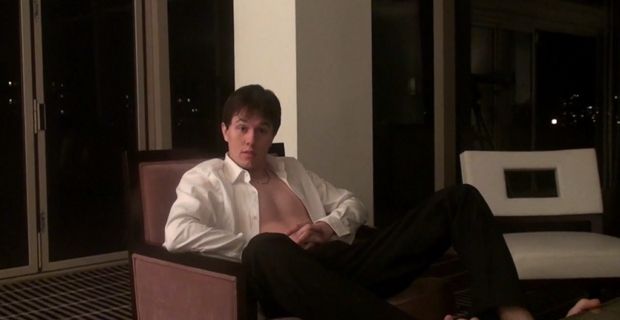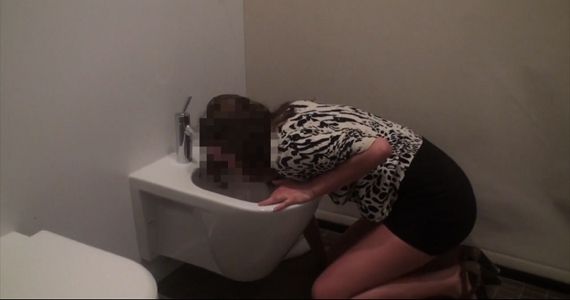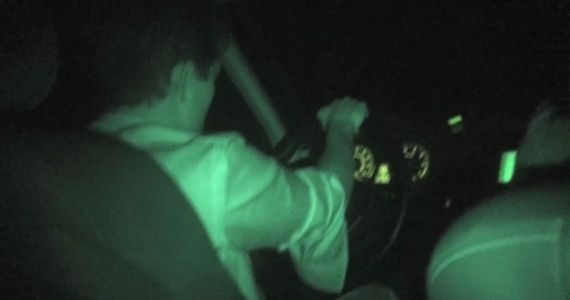If there is any truth at the core of the film, then The Upper Footage is also a bold attempt at using media and marketing as a tool for pursuing justice where the legal system has failed.
Another entry in the found-footage sub-genre, The Upper Footage recounts an infamous night in 2009 when New York socialites Blake Pennington, Will Erixon, Taylor Green and Devon Petrovsky went out for a wild night on the town that went horribly wrong. After picking up a young girl named "Jackie" in a bar, the four friends head to Blake's upscale NYC apartment for some cocaine and liquor-fueled fun. The only problem is Jackie has too much fun, and winds up dead as a result.
What happens next is a real-time look at four people's attempt to cover up a wrongful death - leading to questions that extended beyond the movie screen and into real life.
Like so many found-footage movies, The Upper Footage relies on the gimmick of selling the viewer on the idea of getting first-hand record of actual events - the more implausible and fantastical, the better. Films like Paranormal Activity or The Blair Witch Project go for more subtle and realistic conventions to suggest authenticity - while films like Chronicle and Cloverfield use the format to try and bring the impossible into the frame of reality. It's only gotten more disturbing as newer found-footage films try to outright blur the line between reality and fantasy through viral campaigns and social media promotion - and The Upper Footage is probably one of the more bold and risky attempts yet.
The bizarre story at the center of the film (which you can READ in full HERE) has many strands tied to real-world happenings - but that's all they are: strands. Not solid lines of evidence. A message at the beginning of the film informs us that "director" Justin Cole simply edited the found-footage of the crime into what we're seeing, but it's still evident from the very first frame that this film is a piece of crafted cinema, with obvious production values. Despite the description of Will Erixon being an amateur "vlogger" (video blogger), the movie hits the sort of hard logic-gaps that found-footage often does - namely, why the hell is someone going through the work of filming all this? And, when Cole tries to artfully circumvent these gaps, the film - in its own artfulness - exposes the very facade the director is trying to construct.
Then there are the performers, who indeed come off as "performers." The difference between found-footage films that succeed in their real-world intentions and those that don't is in the performances of the actors involved. You won't find suitably convincing performances in The Upper Footage. The whole 90-minute event plays out like a dramatic re-enactment you might've seen on Unsolved Mysteries, which is a fatal blow to the entire found-footage approach, in this case.
Because it doesn't feel authentic (whether it is or not), choices like a camera left facing a blank wall (with only audio left to hold our attention) become nuisances rather markers of authenticity. The feeling of watching something crafted makes you cognizant (and critical) of the director's level of craftsmanship; The Upper Footage places its bet on the wrong marker (reality) and is ultimately unraveled by that choice.
Where the film redeems itself, however, is in the arena of doubt. While coming off as artificial, there is still enough detail and earned authenticity to leave one wondering - even though we may not be seeing the actual footage of actual events - if we still might be watching the re-enactment of something very real. There are just enough breadcrumbs sprinkled around the Internet (in both old news articles and old footage) to provide any querying mind (and there will be some querying minds after watching this film) with food for thought. The great irony here is that the movie will likely generate actual discourse about larger ideas of wealth and privilege in face of the law, or the questionable authenticity of media these days, even though the film itself in no way broaches those discussions.
If it's all fake, The Upper Footage is nonetheless an intriguing (and gimmicky) experiment in modern media marketing; if there is any truth at the core of the film, then The Upper Footage is also a bold attempt at using media and marketing as a tool for pursuing justice where the legal system has failed. In either case, the debate surrounding the film far outclasses the experience of actually watching it. But therein lies the hook:
If the discussion interests you, can you resist the urge to see for yourself what it's all about?
_______________________________________________________
READ: Is The Upper Footage Real or Fake? (SPOILERS)
________________________________________________________
The Upper Footage is now available online. You can purchase "Tickets" HERE. The film is 90 minutes long and is Not Rated, though it contains drugs, language, adult situations and brief nudity.



